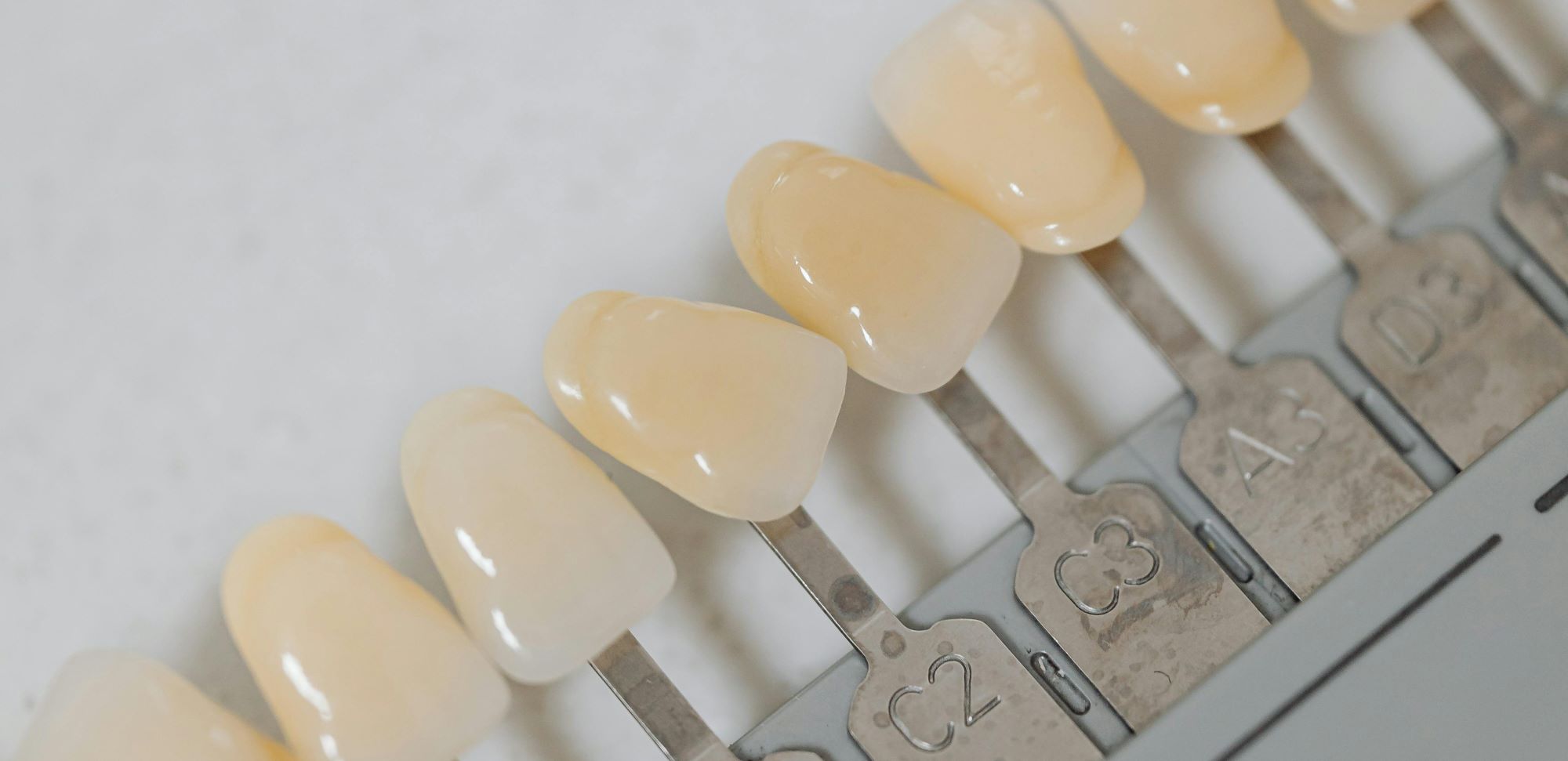
01 Aug The Science Behind Teeth Whitening
Teeth whitening has become a popular trend in modern dentistry, with countless people seeking a brighter smile. Whether it’s for aesthetic reasons or other purposes, the desire for whiter teeth has led to a plethora of products and treatments. However, what exactly happens during teeth whitening? Beyond that, why is it even needed? In this post, we’ll be breaking down the science behind these treatments, why they’re needed, and the different kinds available.
Why Do People Want Their Teeth Whitened?
Tens of millions of people each year use some form of teeth whitening treatment, and the primary reason is discoloration. In the present day, there are several primary culprits when it comes to tooth stains, but first, it’s important to understand tooth stains themselves. To best understand the treatment, it’s critical to first comprehend the root cause of tooth discoloration. It probably comes as no surprise that teeth can be stained in many different ways. Despite that, those blemishes are broken down into two primary types of stains: extrinsic and intrinsic.
Beginning with extrinsic stains, these discolorations are surface-level. They typically result from the consumption of certain foods and beverages like coffee, tea, wine, and soda. Smoking and tobacco use can also cause some serious surface staining. These stains affect the enamel on the outer layer of the tooth and are more cosmetically concerning than dentally.
Intrinsic stains, on the other hand, are deeper and more difficult to address and clear up. These stains occur within the tooth’s inner structure, also known as the dentin. Factors contributing to these blemishes include aging, certain medications, excessive fluoride use during childhood, and trauma to the tooth. These stains require more intensive treatment and care compared to extrinsic stains.
How Teeth Whitening Works
Teeth whitening usually involves two primary mechanisms: the removal of surface stains and the lightening of the tooth’s natural color. This process is typically achieved through the use of bleaching agents, primarily hydrogen peroxide and carbamide peroxide.
The chemical process primarily involves oxidation. When bleaching agents are applied to the teeth, they release oxygen molecules. These molecules penetrate the enamel and dentin, breaking down the molecules responsible for discoloration. The oxidation process disrupts bonds, causing them to be less visible and resulting in a whiter appearance.
Hydrogen peroxide is typically familiar to us as a disinfectant, but it’s also a strong bleaching agent! The chemical penetrates the enamel to reach discolored molecules inside the tooth. It breaks these molecules into smaller, less pigmented pieces, making the teeth appear whiter. Carbamide peroxide, on the other hand, breaks down into hydrogen peroxide and urea, with hydrogen peroxide doing the bleaching work.
Effectiveness and Duration
The effectiveness of teeth whitening often varies based on several factors. The concentration of the bleaching agent plays a large role; higher concentrations typically yield faster and more blatant results. The duration and frequency of treatment will also influence effectiveness. Unique differences in enamel, such as thickness, can affect how well the teeth respond to whitening.
Finally, the results from teeth whitening are not permanent. As a matter of fact, the duration of the effects sorely depends on habits and oral hygiene practices. Consuming staining foods and beverages, as well as smoking, can cause the teeth to re-stain over time. Regular touch-ups and maintaining good oral hygiene, however, can help prolong the whitening effects.
Safety and Side Effects
Several misconceptions surround teeth whitening. A common one is that whitening weakens teeth. In reality, when used correctly, bleaching agents do not harm tooth enamel. They work by breaking down stains, not by stripping away enamel.
While teeth whitening is generally safe, there can be side effects, the same as any other treatment. The most common side effect is tooth sensitivity. Whitening agents can temporarily increase tooth sensitivity to hot, cold, or sweet sensations, but usually subsides after the treatment is completed. Gum irritation is another potential side effect, often caused by contact between the bleaching agent and the gums. This can be reduced by making sure the whitening trays fit properly and the gel is applied carefully.
To ensure your teeth remain healthy, it’s essential to follow the instructions provided with whitening products and consult with a dental professional before starting any serious whitening regimen.
Types of Teeth Whitening Treatments
There are various teeth whitening treatments available, each with its advantages and considerations.
- Professional Teeth Whitening: Professional whitening treatments should be performed by dentists and offer the most significant and immediate results. In-office treatments often involve applying a strong bleaching gel to the teeth, often enhanced by a special light or laser to accelerate the process. These treatments can lighten teeth by a noticeable amount in just one session. Dentists can also provide at-home whitening kits, which include custom trays and professional-grade gel. These kits offer a balance between convenience and effectiveness, as patients can whiten their teeth in their homes while still achieving substantial results.
- Over-the-Counter Whitening Products: Numerous purchasable whitening products are available, including whitening toothpaste, strips, gels, trays, and rinses. Whitening toothpaste contains mild abrasives and low concentrations of bleaching agents to remove surface stains. Whitening strips and gels, applied directly to the teeth, usually offer more noticeable results than toothpaste. However, these products generally have lower concentrations of bleaching agents compared to professional treatments, making them less effective for deeper intrinsic stains.
Conclusion
The teeth whitening industry has exploded over recent years, and not without good reason. Whether it’s to impress, or simply a personal preference, swathes of people get whitening treatments yearly. As such, it’s important to share information on how this popular method of aesthetic enhancement works. Whether the stains are intrinsic or extrinsic, tooth whitening is the simplest method of improving the surface color of your teeth.
The effectiveness will, of course, depend on the intensity of the treatment. On top of that, there are potential temporary side effects. In light of this, however, when done properly, the treatment is safe and can be very beneficial. Make sure to consult your dentist, or a dental professional before beginning any treatments!
Washington Family Dental offers whitening and dental health solutions that fit your specific needs. We are your home for the excellent dental care you and your family deserve. Schedule an appointment today!

About Our Team
Our team at Washington Family Dental has over 30 years of experience in the field of dentistry and a reputation for excellent patient care.
Read more about our team here. Ready to book your appointment? Contact us here.
